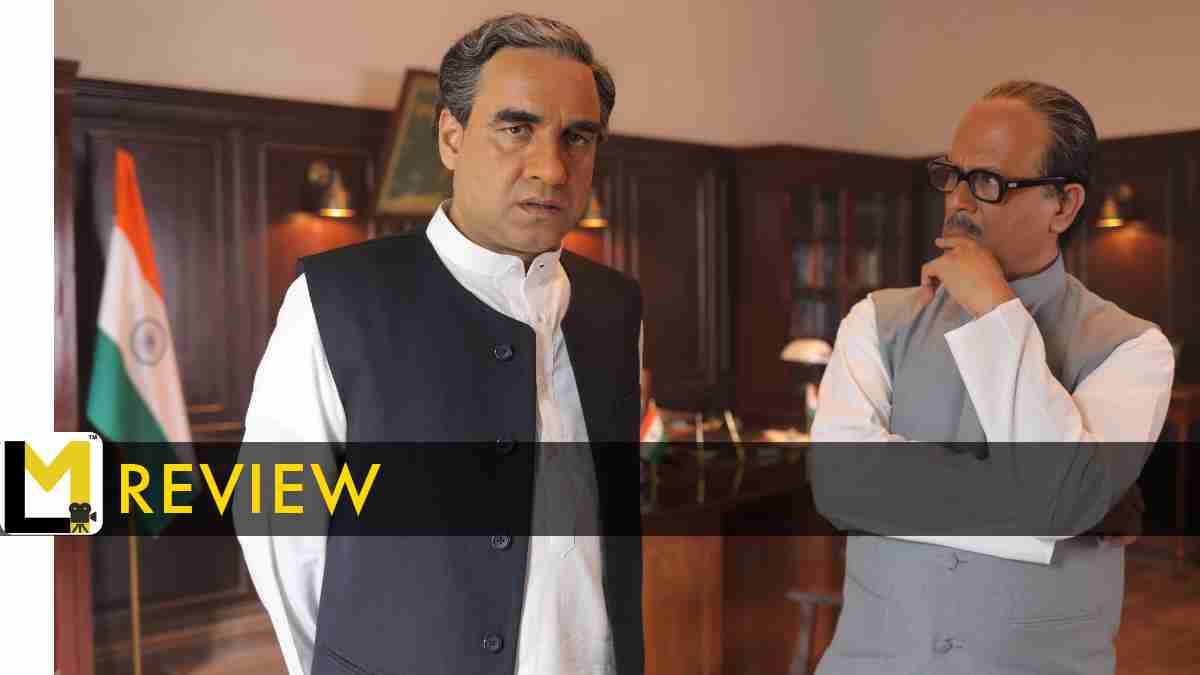As someone who grew up in the ’90s, I remember Atal Bihari Vajpayee as a political figure who was always standing up for ideas of love and peace. Some have even called him the “right man in the wrong party.” The underwhelming part about the new movie Main Atal Hoon is that the peace-seeking, love-endorsing, poet side of this man went in the backdrop while the political agenda of whitewashing many names and justifying many events took the driver’s seat in this movie that works more like a showreel of BJP to a generation who may not have seen Vajpayee while he was in power.
The movie opens with the scene of Atal Bihari Vajpayee as a PM taking a strong decision in the Kargil war and then we are taken back to the pre-independence era to show the journey of Vajpayee. What we see is basically the travel of Vajpayee from being a student, editor-in-chief of a newspaper, and eventually becoming a significant political figure in the history of India.
The Pokhran test, the peacekeeping Lahore bus journey, his glorious poetic speeches, etc. are enough to make him eligible to be celebrated. But celebrating Vajpayee is not really the ultimate intent of the movie. The film begins in the pre-independence era, and from the independence struggle to the Kargil War, the movie covers almost all the major events in Indian history. The filmmaking is so purposeful in establishing India as a weaker country during the Congress regime, that if you show a kid this movie, he might think Kargil is the only war we have won. And they have chosen to end the film with the Kargil victory, selectively choosing to skip a grey zone in the man’s life. Some of the other key events such as the Kandahar hijack and the terrorist attack on parliament are not even mentioned in the film and an honest biopic would have taken an effort to include those dark chapters to understand the character more on a personal level.
Pankaj Tripathi’s performance as Atal Bihari Vajpayee is just remarkable. The actor is known for his prowess in the Hindi language and that actually makes things so graceful when Tripathi is uttering those lines. There is careful attention to detail in the body language he adapts for the character. As the character gets older Tripathi changes the way the character uses their hands during his speech. While performing the climax portions, he incorporated Vajpayee’s eyes-closed style of speech in his performance. I remembered how actors like Saju Kodiyan used to use that characteristic to mimic Vajpayee on stage. Tripathi makes sure that the performance never comes across as a goofy mimicking of the person he is portraying. Other than Pankaj Tripathi, no other person in the star cast has the space to perform as the movie is sprinting through historical events.
In terms of visual language, Ravi Jadhav is trying to make things very symbolic and graceful with the use of the spotlight in certain moments that are important for Vajpayee. But the craft is used largely for the unsubtle demonization of the Congress party. I do agree with the reality that events like Emergency, Operation Bluestar, etc. are definitely dark chapters in the history of India. But the staging of those events, or I should say the lack of proper staging of those events sort of exposes the intention of the movie to use a man who is known for making efforts to maintain peace to justify the current extreme stand of the party he built. It was a bit ironic when the things they showed as Congress’s cheap tactics to dethrone Vajpayee were actually something their current leadership was doing. The writing was sort of lost in the initial patches in establishing the past of Vajpayee that in the last 45 minutes or so, the movie feels like a highlights package with a key event happening with terrible green screen CGI, almost every 5 or 10 minutes. The post-2000 events in Atal Bihari Vajpayee’s life are fascinating bits for a character study, but I guess the chances of seeing those ideological conflicts won’t happen any time soon in the “new” India.
Releasing around the time of the election and also on the weekend prior to Ram Mandir’s inauguration, you don’t need to think too much to understand the political motive behind this Sandeep Singh production. In my head, a movie about someone like Atal Bihari Vajpayee would have been a creation that would make us realize why he chose the right wing. Since he was the founding president of the BJP, the movie cheekily assigned all his characteristics to the whole party. Main Atal Hoon is a manipulative bullet point documentary featuring a terrific Pankaj Tripathi.
Main Atal Hoon is a manipulative bullet point documentary featuring a terrific Pankaj Tripathi.
Green: Recommended Content
Orange: The In-Between Ones
Red: Not Recommended


